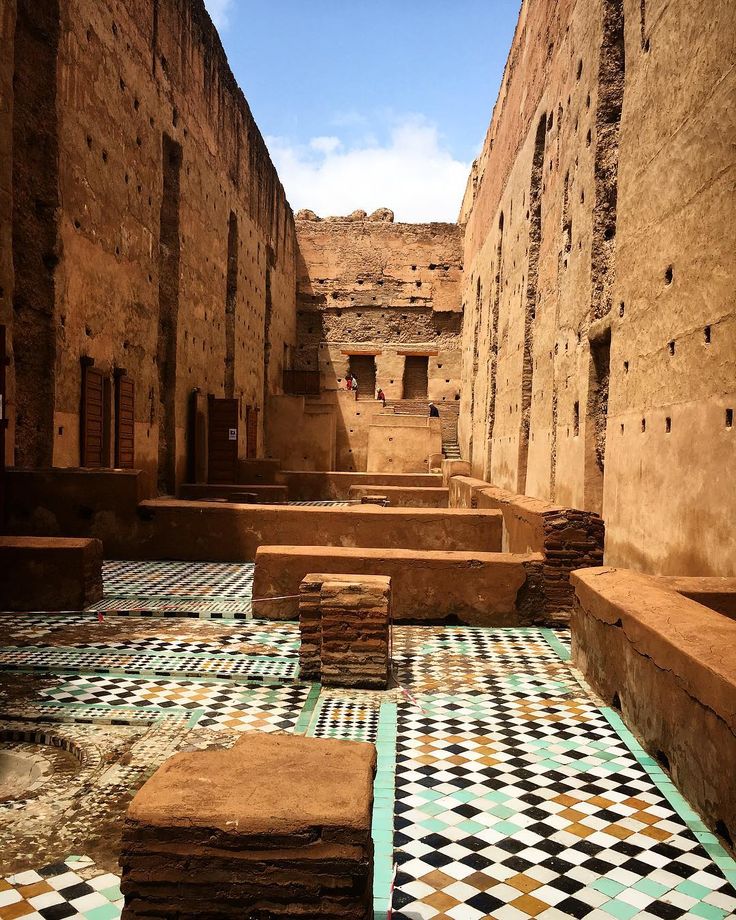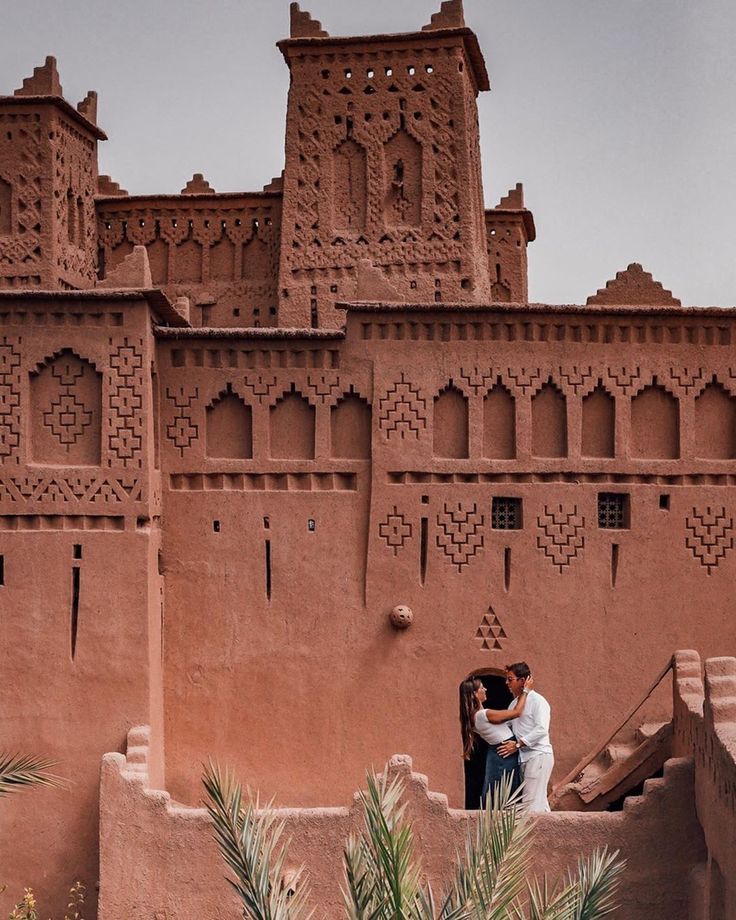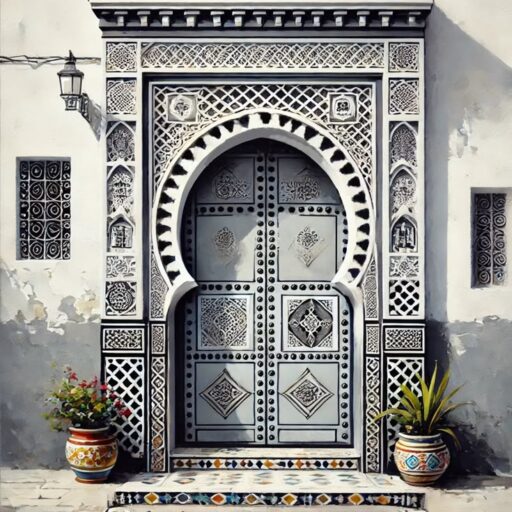Royal palace complex, architecture
Almohad and Saadian
Marrakesh’s ancient medina lies the Kasbah of Marrakesh, a historically fortified district that once served as the city’s formidable citadel and royal palace complex. More than just a collection of old buildings, this is the very heart of Marrakesh’s imperial past, a place where grand Almohad and Saadian ambitions unfolded, leaving behind a legacy of architectural wonders and fascinating stories.
Founded in the late 12th century by the Almohad Caliph Ya’qub al-Mansur, the Kasbah was a revolutionary urban project, a self-contained city-within-a-city designed to house the ruling elite and their entire administrative apparatus. It was a strategic choice, providing a secure and opulent environment for the caliph and his court. Later, in the 16th and 17th centuries, the Saadian dynasty, who made Marrakesh their capital, further restored and rebuilt the Kasbah, adding their own distinctive stamp of luxury and artistry.
the Kasbah still houses the official Royal Palace (Dar al-Makhzen), which serves as the King of Morocco’s residence when he visits Marrakesh, much of the district is accessible to the public, offering a captivating journey through time




The Kasbah of Marrakesh, inscribed as part of the Medina of Marrakesh on the UNESCO World Heritage list in 1985, is a testament to the city’s enduring legacy as an imperial capital. It’s a place where you can tangible connect with centuries of Moroccan history, from the powerful Almohads to the artistic Saadians, and appreciate the architectural grandeur that shaped this iconic “Red City.” Allow ample time to immerse yourself in its rich tapestry of history, beauty, and local life
Bab Agnaou Begin your exploration at this majestic 12th-century gate, one of the most iconic and beautifully preserved entrances to the Kasbah. Its horseshoe arch, framed by intricate stone carvings and Kufic inscriptions, is a masterpiece of Almohad architecture and a grand introduction to the historical quarter.
Kasbah Mosque (Moulay al-Yazid Mosque) Standing proudly near Bab Agnaou, this grand mosque was built by Ya’qub al-Mansur to be the congregational mosque for the caliph and his royal district. While non-Muslims cannot enter, its imposing minaret, with its distinctive green and white geometric mosaic tiles, is a prominent landmark and a testament to Almohad architectural prowess.
Saadian Tombs Tucked away beside the Kasbah Mosque, these exquisite 16th-century royal necropolis were discovered relatively recently in 1917. They house the lavishly decorated tombs of over sixty members of the Saadian dynasty, including Sultan Ahmad al-Mansur. The “Room of the Twelve Columns,” adorned with intricate stucco work, carved cedarwood, and shimmering zellij tiles, is a breathtaking example of Islamic art and a true highlight.
El Badi Palace Though largely in ruins today, the sprawling El Badi Palace speaks volumes about the Saadian dynasty’s immense wealth and ambition. Built by Sultan Ahmad al-Mansur in the late 16th century, it was once a colossal complex of courtyards, pavilions, and gardens, famously adorned with gold, turquoise, and crystal. While only the shell remains, you can still wander through its vast spaces, climb the walls for panoramic views of the Kasbah, and imagine the opulence that once defined this “Incomparable Palace.” Look out for the storks nesting on its weathered walls!
The Mellah Adjoining the Kasbah’s eastern flank, the Mellah is Marrakesh’s historic Jewish quarter. Established by the Saadian Sultan Abdallah al-Ghalib, it offers a distinct atmosphere with its narrower streets, different architectural styles, and the Lazama Synagogue, providing a glimpse into the city’s multicultural past.
Local Life and Souks Beyond the grand monuments, the Kasbah district is a vibrant residential area. Explore its quieter alleys, discover local souks with their traditional crafts, and perhaps stop for a refreshing mint tea at one of the charming cafes. The pace here is often a little less frenetic than the main medina, allowing for a more relaxed experience..

